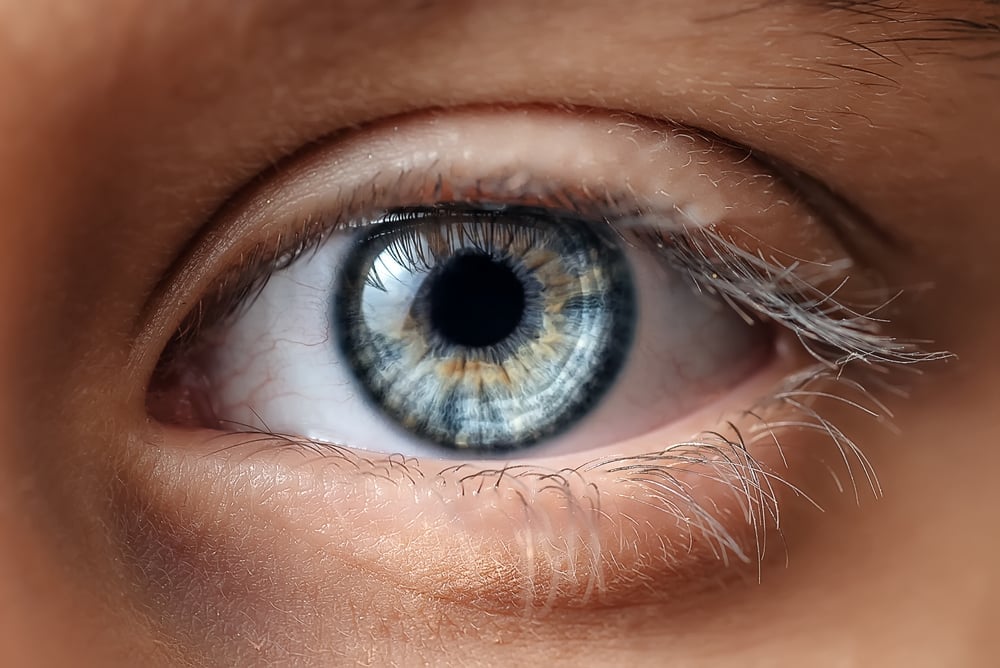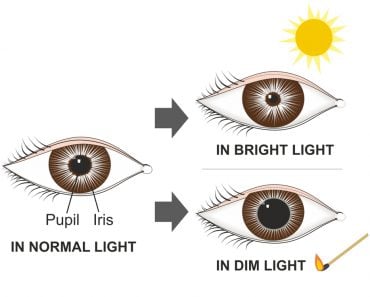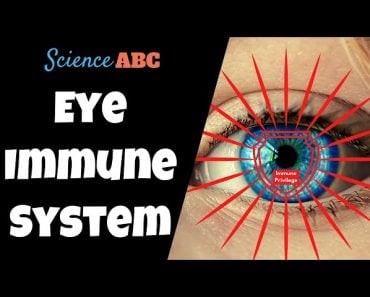Table of Contents (click to expand)
Yes, much like how we have a dominant hand, we also have a dominant eye. However, the two are not related. Knowing which eye is your dominant eye can make a difference in various activities, as well as certain medical conditions.
Whoever is reading this article is either left-handed, right-handed or if you’re lucky, ambidextrous. It’s nothing new to pick a hand at infancy and stick with it for the rest of your life, but did you know that even before that, your brain picked an eye for you? Without even asking for your input!
Well, have you ever stared into the distance and focused on some random object, say a lighthouse? You might have accidentally blinked or winked and seen the entire lighthouse jump sideways! If this has ever puzzled you, believe it or not, you may have given yourself an ocular dominance test and identified your dominant eye.
Let me explain.

Recommended Video for you:
What Is Ocular Dominance?
Ocular or eye dominance is when one of your eyes is dominant, leaving the other to be non-dominant. Studies show that dominance of the eye is generally based on three different criteria.

- The eye with better visual acuity and contrast sensitivity = Sensory dominance
- The eye that remains dominant even with a rivaling stimulus from the other eye = Binocular rivalry or Motor dominance.
- The eye that allows you to easily focus on something, like the lighthouse example above = Sighting dominance.
A dominant eye may come under all of the above criteria, or just one or more.
It is intuitive to assume that your dominant eye is the one with better vision, but the jury is still out on that one, as one study showed that there is no such correlation. Whereas results from another study showed that the dominant eye had better visual acuity.
Is It Always One Or The Other?
Not necessarily. Eye dominance can also be on a spectrum, based on the type of task at hand. At times, each eye is dominant for a different task, leaving such people to have mixed ocular dominance.
Some people may also have neutral dominance, where they can use both eyes for all tasks. In cases where the dominance between two eyes is only slightly different, it could be mistaken as neutral dominance.
Why Do We Have It?
Our eyes generally transmit whatever they see to an area in the brain called the visual cortex. The visual cortex contains bands of neurons called ocular columns. The dominant eye has more neural connections to this area than the non-dominant one. Hence, these columns preferentially respond to input from one eye over the other, resulting in dominance. This choice is made quite early on during the development of the brain and the eyes.
Is This Visual Dominance Related To Handedness?
Most of the time, the dominant eye corresponds to the dominant hand. One study showed 35% of right-handers and 57% of left-handers amongst their cohort as left eye-dominant. However, this is not a firm rule. Some people can have cross-dominance, where the dominant eye opposes their handedness. For example, your left eye is dominant, but you are right-handed.

Handedness among people is caused by cerebral laterality. That is, each hemisphere of the brain controls different functions. The right hemisphere controls the left hand, and is responsible for creativity and imagination, whereas the left hemisphere controls the right hand and is responsible for speech, writing and communication.
However, when it comes to vision, both hemispheres control both eyes. Each hemisphere controls a part of the field of vision of both eyes, so there is no correlation between handedness and eye dominance.
Why Is It Important To Know Your Dominant Eye?
Knowing which eye is dominant can help you throw or hit a ball accurately while playing baseball, tennis, or basketball, focus on something small and specific, like while shooting, or focus on the image generated in a microscope or telescope.
Eye dominance can affect day-to-day activities, such as taking a photograph. Taking a picture with your non-dominant eye can sometimes result in a misaligned image.
A study to assess eye dominance and rifle marksmanship showed that a significantly higher percentage of subjects with uncrossed dominance performed better and achieved rifle qualification, as compared to subjects with crossed dominance. For sports persons, knowing whether they are cross-dominant early on can help in their training. Based on the type of sport, slight alterations to their stance, position or aim can greatly help in their performance.
Medical Reasons Why Ocular Dominance Is Important
Lazy eye (Amblyopia) is a condition in which the vision in one eye is much weaker than the other; this condition is commonly seen in children. Usually, weaker or poorly developed muscles of one eye are behind this. Because one eye is stronger than the other, the child tends to lean on and use this one more. If left uncorrected, the brain can essentially ‘turn off’ the weaker eye. Correcting this involves patching the dominant eye so that the child is forced to use the weaker eye and strengthen it.

In old age, it is common to develop presbyopia, a natural aging of the eyes that makes it difficult to see nearby objects. Think of your grandparents scrunching up their faces, trying hard to focus on the menu at a restaurant or read the paper in the morning. Common ways to treat this include using prescription magnifying glasses, but for those seeking a more permanent solution, ophthalmologists often suggest Monovision AKA Blended vision.
Monovision As In… Becoming Cyclops?
In monovision or blended vision, one eye sees distant objects, while the other sees things up close. Since seeing objects at a distance is more important, your doctor will assess which is your dominant eye and assign it for long distances. Similarly, your doctor will assign the non-dominant eye for near vision. Of course, both eyes are still used equally, and you often can’t tell the difference. Clinicians will use surgeries like LASIK, artificial lens implants or even contact lenses to establish Monovision.
For people with monovision requiring contact lenses, it will be important to put the right contact lens in the right eye. One will be for distance, the dominant eye, and the other will be for near vision.
Monovision, however, isn’t for everyone. Some people may find it difficult to adapt to this. In some cases, since the two eyes are focusing at different distances, accurate depth perception might be a bit more difficult. This is why doctors initially suggest trying contact lenses for monovision before going ahead with the surgery.
How To Test For Your Dominant Eye
Ophthalmology clinics have the equipment to determine which is the dominant eye. A commonly used test is the “+1.50D blur test”, where your doctor will give you a series of lenses and ask you what you experience.
Here are some DIY at-home tests you can do:
The hole-in-the-card test is the most commonly used one. You can take a rectangular card of any type and cut a small hole in it, preferably around the size of your eye. Hold the card with both arms at arm’s length and try to focus on an object at a distance on the other side of the card. Close one of your eyes alternatively and try to focus on the object. The eye that can see the object through the hole with the other one closed is the dominant eye.

There is another easy test you can do right now while reading this. Called the Miles test, this test requires you to form a circle with both your hands, crossing your index fingers and thumbs, and extending it at arm’s length. Focus on an object at a distance from you. Now, alternatively try closing one of your eyes and continue focusing on the object. If the object remains centered with one eye closed, then the open eye is your dominant eye. With only the non-dominant eye open, the object will shift to the side.
Eye On The Prize
Now you know all the reasons why it is important to know where on the ocular dominance spectrum you lie. Go ahead and try some of the simple techniques mentioned above to determine your ocular dominance for yourself.
Of course, no one other than your ophthalmologist will be able to guide you better, so don’t forget to visit them if you have any concerns about your vision!
References (click to expand)
- Eye Dominance - American Academy of Ophthalmology. The American Academy of Ophthalmology
- What Is Monovision (or Blended Vision)?. The American Academy of Ophthalmology
- Pointer, J. S. (2001, March). Sighting dominance, handedness, and visual acuity preference: three mutually exclusive modalities?. Ophthalmic and Physiological Optics. Wiley.
- Lopes-Ferreira, D., Neves, H., Queiros, A., Faria-Ribeiro, M., Peixoto-de-Matos, S. C., & González-Méijome, J. M. (2013). Ocular Dominance and Visual Function Testing. BioMed Research International. Hindawi Limited.
- Mapp, A. P., Ono, H., & Barbeito, R. (2003, February). What does the dominant eye dominate? A brief and somewhat contentious review. Perception & Psychophysics. Springer Science and Business Media LLC.












